Trams glide effortlessly along Princes Street. And they are popular - a year into Edinburgh Trams’ operation, more than 370,000 extra passengers are using the system against the anticipated figures.
Yet this is a system that had a difficult (and well-documented) birth. A quick search on Google quotes prices of £231 million and £375m over budget. “Three years late” is also mentioned in headlines. Type in “Edinburgh trams delays” and the word “fiasco” comes up. Troubled, it is fair to say, would be an apt description.
In total, the scheme cost £776m. Funding had first been confirmed in 2003 at an initial £345m, with the launch date for the project set at that time for 2008. In 2004, a 15-year operating deal was awarded to Transdev for the operation and maintenance of the network… in 2009 that was cancelled!
Bills for the reintroduction of trams in Edinburgh were passed by the Scottish Government in 2006… at which point funding of the entire system was deemed not possible. The two surviving lines were then split into four phases. These were:
- Phase 1a - Newhaven to Edinburgh Airport via Princes Street.
- Phase 1b - Haymarket to Granton Square via Crewe Toll.
- Phase 2 - Granton Square to Newhaven.
- Phase 3 - extending the airport line to Newbridge.
In 2007, the first big threat appeared when the Scottish National Party (SNP) vowed to cancel the scheme to save money. The SNP-led minority government agreed to continue with the scheme provided no more public money was spent. The city’s council cancelled Phase 1b in 2009, which saved £75m.
Construction began in 2008, by which time costs had risen to £521m. Opening was then set for 2011 with an original budget of £545m, but in 2009 a dispute over changes to the project between Transport Initiatives Edinburgh (Tie, the now defunct city council tram developer) and Bilfinger Berger (which built the scheme), resulted in further disruption and delays. Interest payments over the next 30 years will reportedly cost the council £228m.
In June 2011 the council voted to continue with the scheme, but two months later voted to cut the section from the airport to Haymarket, reducing the cost to £715m. Then a decision was made to reverse that. On November 29 2011, York Place was announced as the eastern terminus.
The trams were built in Zaragoza, in Spain, by Construcciones y Auxiliar de Ferrocarriles (CAF). Because of the various cutbacks, only 17 of the 27 vehicles are needed.
There is an inquiry into the project’s troubled history, launched in June last year by then First Minister Alex Salmond. On May 27 Lord Hardie, the chairman of the Edinburgh Tram Inquiry, issued a formal call for persons or organisations wishing to be designated ‘core participants’ in the inquiry to come forward.
Yet there is also praise for the system. In January last year, Norwegian officials confirmed they would use Edinburgh as a blueprint for Oslo’s system, which The Scotsman described as ailing.
Prior to the launch on May 31 2014, trams had last served Scotland’s capital in November 1956. Proposals for their return had surfaced in the 1990s, and initially it was suggested they would run from Newhaven to Princes Street. Three lines were subsequently suggested, with further destinations.
May 31 marked the first year anniversary, and official figures show that 4.92 million journeys were made in that period.
“The first birthday was a very exciting day for all of us because it rounded off a hugely significant year for everyone involved,” says Tom Norris, director and general manager of Edinburgh Trams.
“We’ve beaten our targets and we’re on the right path. The success we’ve worked so hard to achieve is down to the commitment and hard work of everyone involved in delivering the service day in day out.
“We were absolutely delighted with the initial surge of interest when we launched, but even more grateful that the local and visiting public have continued to give us their support.
“We have developed the service over the first year and we’ll continue to improve and adapt to keep our passengers happy, while being ready to take advantage of opportunities that come our way. The airport is growing, Transport for Edinburgh is developing well, a new tram stop will link us to the Fife line, and our city is going from strength to strength. We’re ready to be at the centre of that development and part of the continued success of Edinburgh.”
Transport for Edinburgh Chairman Lesley Hinds adds: “To have had nearly five million passengers on board the trams since their launch is a massive achievement, and it’s thanks to the support of the public that we’ve had such a successful first year.
“Credit must also go to the team, whose efforts and professionalism ensure Edinburgh Trams provides an excellent service to passengers every day. As it continues to develop as a key element of the city’s transport offering, we now look forward to its future as part of the city’s modern, integrated transport system.”
Norris spoke to RAIL on June 19, three weeks before he was due to leave Edinburgh Trams to join Abellio, where he will be Group Operations Director. He joined the trams in 2012 and sums up his role as one of “mediation“.
He says: “It was a revised timescale. It was being worked on, but Edinburgh was a mess. But the project was moving.”
Norris’ role was to look forward. There was a new team in place at this point, with contractors replaced and funding in situ… finally. “The new team was very good. There was a steely process to get the job done. By then it was a question of when it was finished, not if.”
It was feared that the trams would suffer a public backlash after all the problems. Parts of Edinburgh had been ripped up, and densely populated areas of the city that were due to receive trams now were not.
Norris admits: “The turnaround was quicker than we thought. We worked with passengers, and we had the belief that as long as operations were solid we would be OK.”
OK it is. Edinburgh Trams received a 95% overall customer satisfaction rating following an independent UK-wide survey by Transport Focus, and operated with 99% service reliability. That places it among the top public transport operators in the UK.
Between them, tram drivers and Ticket Services Assistants completed 77,525 journeys over the year, covering 674,467 miles up and down the route. The depot was manned for 8,760 hours by staff on a rota system.
Norris says the busiest section is that to the airport (the airport itself is growing by 10% annually), while Ingliston Park & Ride is proving popular with commuters and Edinburgh Park with passengers using the service to reach shops. There are also various potential developments planned for this area, which could help spark more growth.
Unsurprisingly, the busiest individual stop is Princes Street in the heart of the city. Norris explains that passengers will board at York Place and travel one or two stops.
He acknowledges that the airport is a big focus: “It is where the yield is higher. We have to focus on that.”
There is also a large price hike (from £1.50 to £5 for a Single Ticket) between the penultimate stop and the airport.
“We proposed different fares,” says Norris. “Our stakeholders made the jump bigger. Our fares are tied by Lothian Buses. The model works - it is similar to AirLink fares, and it is more to match that.”
Edinburgh Trams operates both the tram vehicles and the route. The City of Edinburgh Council wholly owns the public company, which is run as an arms-length organisation. Edinburgh Trams is part of the Transport for Edinburgh group, which also includes Lothian Buses. Norris explains that the ownership model is designed to better encourage integration.
“The way the corporate structure works is TfE owns Edinburgh Trams 100%. Lothian Buses is 91% owned by TfE.”
Looking forward to beyond Norris’ tenure, he says: “For me, the trams do need to go to Leith. Really it needs Newhaven, too. I think the success of the first year shows the success of the network. The stumbling block is finance.”
Could local businesses chip in, as per Crossrail? After all, if the city is to benefit, shouldn’t the city pay for it?
“I am not sure getting people funding it… I don’t think that is the right idea. Of course, we would love to operate an extension. But do people want it? If they do, then how do we pay?”
Norris admits that the goodwill towards the scheme from the people of Leith has gone: “I think we are seeing that people are saying we would like it to Leith. But we would want to get this right - it has to be a model project.”
Last December, Edinburgh councillors approved proposals for the preparation of an Outline Business Case assessing options to extend to Leith, which would be costed at around £144m.
Now the council will hear conclusions evaluating the extension to either Newhaven, Ocean Terminal, the foot of Leith Walk or MacDonald Road. Further work will be carried out - including a formal market consultation, testing and auditing of the financial model, and an investigation of alternative funding options - ahead of the final decision in the autumn.
Says Hinds: “I am extremely pleased with the progress of the business case, which already shows the clear economic impact the extension of the tram line could have on the city.
“In the first year of operation we have seen passenger numbers increase, demonstrating a growing demand for public transport in Edinburgh and making the case for extending the tram to benefit people elsewhere in the city.
“But we don’t want to make any rash decisions about the future of the project, and that’s why further due diligence is required to ensure a robust financial case that can be used as a basis for an informed judgement. We will also be exploring all avenues for funding, and considering a series of new and innovative options with a view to delivering best value.
“It is essential that we learn from our past mistakes, and I am confident that this process will deliver thoroughly researched, strategic options for a tram extension.”
An economic appraisal, conducted in line with Scottish Transport Appraisal Guidance (STAG), shows an extension would deliver a positive economic impact, with significant increases in tram patronage forecast for each of the Newhaven, Ocean Terminal and the foot of Leith Walk options.
Norris says of the system: “It is a moving beast - it’s a credit. Reliability and punctuality! And as an operator, to be given twice the size of the fleet needed is a dream.”
With that in mind, he believes better utilisation is possible: “I think it will happen this year. I think we will increase operations, as the trams are busy. Increases in headways are possible. For rugby days , headways are five minutes.”
Norris says that while the busy times for the network are predictably the normal peaks, there has also been a rise in passenger numbers during the day.
There are also plans to serve the first flights from Edinburgh. Currently the network closes for a maintenance period between 0000 and 0500, but Norris says: “We’d like to leave York Place at 0500 - that’s about 30 minutes earlier than now.”
Is there a market for 24-hour running?
“I’m not sure. Even during the Edinburgh Festival, the late-night trams are not busy. If it went to Leith and Newhaven there could be an argument for operation extensions, but it is closely linked to the buses, which do run 24/7.”
Fare evasion is also low - just 0.35% of passengers. “That’s partly because the people of Edinburgh are very honest, but also because the approach we have is different. We have someone on the tram, and it is pretty much certain your ticket will be checked.
“We don’t have penalty fares. It is a £10 fine, but also you must get off at the next stop and buy a ticket.” Norris says this system works because passengers do not like their journeys being disrupted.
As he prepares to leave for Abellio, Norris looks back on his time at Edinburgh Trams: “I always had confidence that it would be used. I think we will have extensions, but in the meantime there has been a good first year and the numbers work.
“We need to say the assumptions are good, but we need to refine. If you think of things we have done, then we have asked passengers what they want. They wanted to eat and drink on the trams, and we did that. Next we need to make the timetable better - remove niggles. Punctuality is 96% and reliability is 99%. We’ve been really pleased.”
After such a troubled few years getting the project off the ground, Edinburgh is falling in love with its trams. When Norris arrived three years ago, his job was about mediation. For his replacement, it is about expansion.
- This feature was published in RAIL 778 on July 8 2015

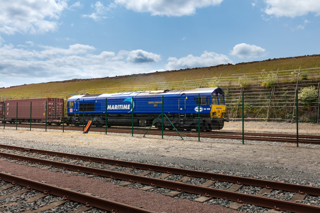
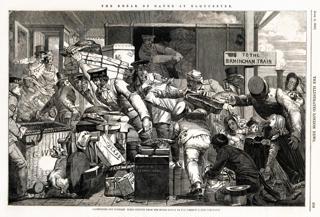
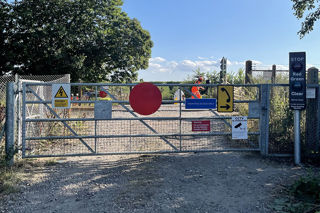
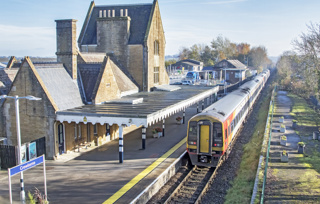
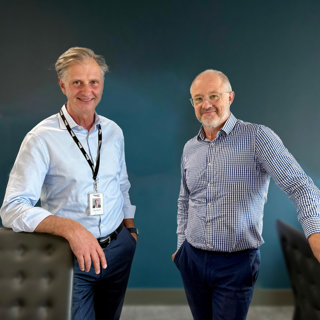

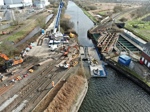









Login to comment
Comments
No comments have been made yet.